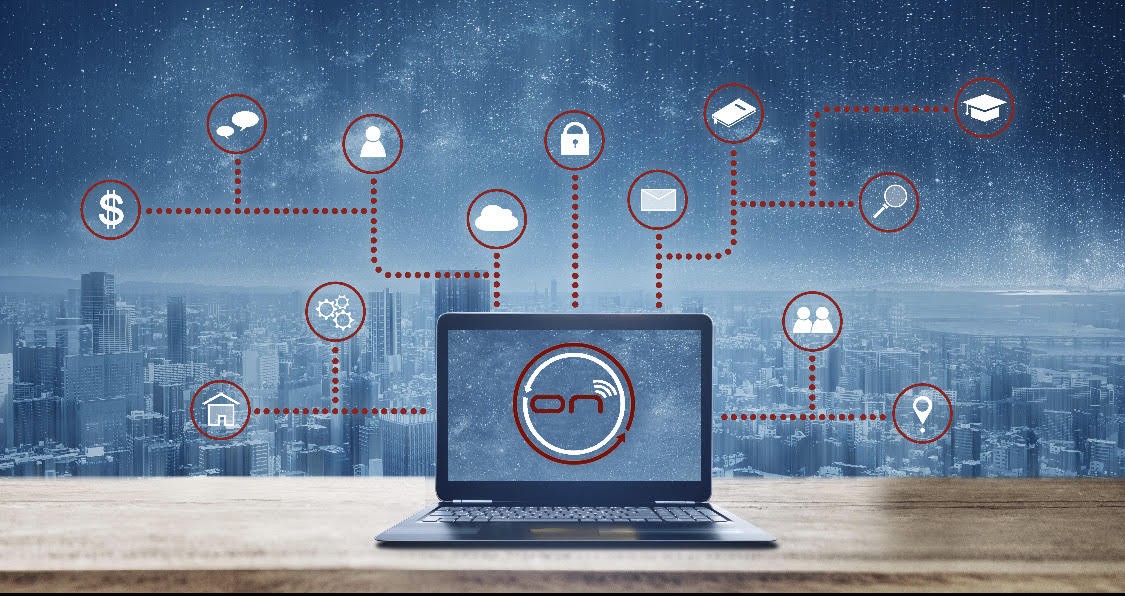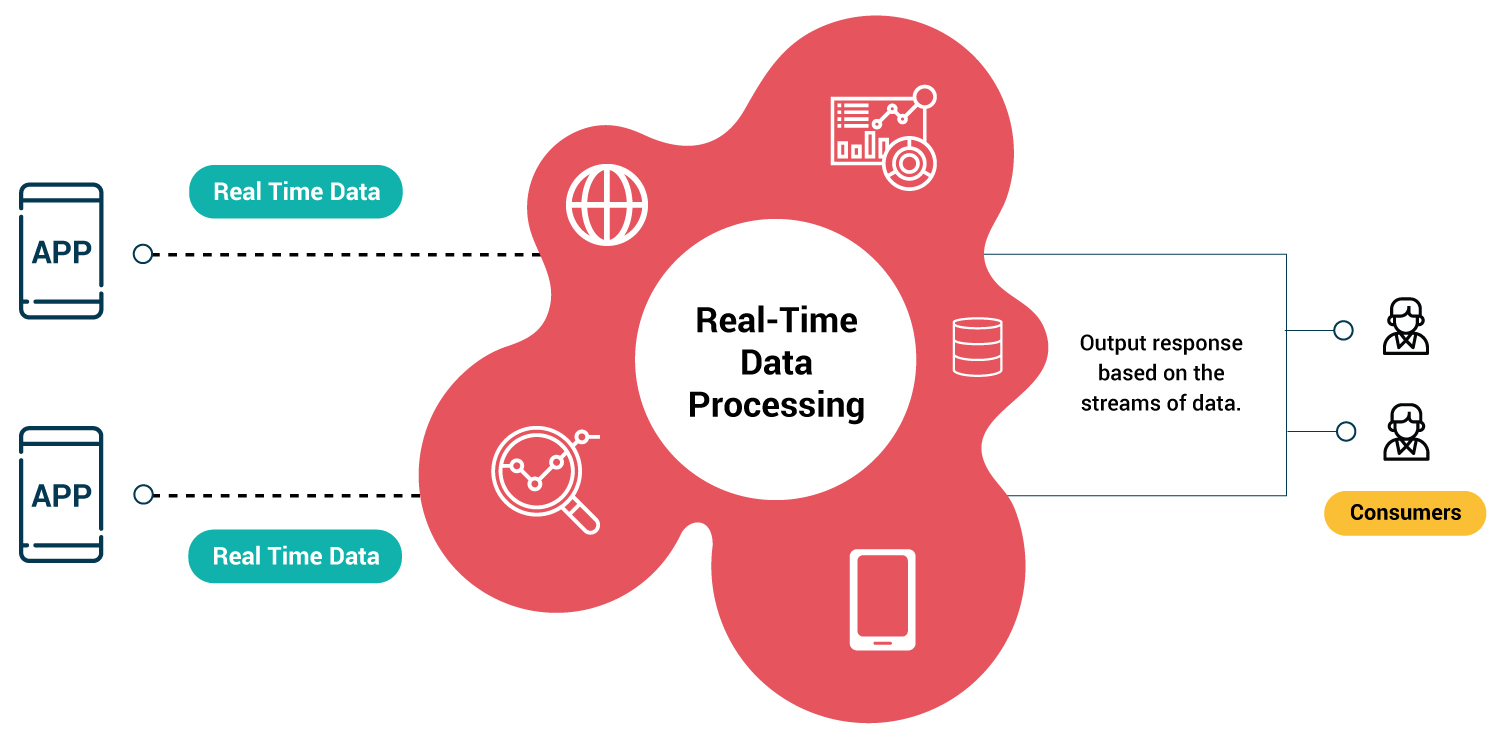In today’s fast-paced digital world, the demand for real-time data has become more significant than ever. With the rise of connected devices and the internet of things (IoT), the need to receive and process data in real-time has become crucial for businesses and industries worldwide. This has led to the emergence of real-time data transmission, a technology that enables the transfer of data instantly and continuously, allowing for timely decision-making and improved business processes.
Real-time data transmission is not just limited to businesses; it has also revolutionized our personal lives, with applications such as live streaming, instant messaging, and social media platforms relying on this technology. In this article, we will delve deeper into the world of real-time data transmission, understanding its importance, benefits, challenges, and future prospects.
Understanding Real-Time Data Transmission
Before we dive into the intricacies of real-time data transmission, let’s first understand what it means. Real-time data transmission refers to the transfer of data immediately or almost instantly, without any delay. It allows users to receive and process data in real-time, enabling them to take immediate actions based on that information.
In simpler terms, imagine you are scrolling through your social media feed, and you come across a live video stream of an event happening halfway across the world. Without real-time data transmission, this would not be possible. The data from the video is being transmitted in real-time, allowing you to view it instantly, without any delay.
Importance of Real-Time Data Transmission
The concept of real-time data transmission may seem straightforward, but its importance cannot be emphasized enough in today’s digital landscape. Here are some of the key reasons why real-time data transmission is crucial:

While the idea of real-time data transmission appears simple, its critical significance in today’s digital environment cannot be overstated
- Timely Decision-Making: In a fast-paced business environment, every decision counts. Real-time data transmission allows companies to receive and analyze data in real-time, enabling them to make timely decisions that can have a significant impact on their operations.
- Enhanced Customer Experience: With consumers’ expectations rising, businesses are under constant pressure to provide top-notch services. Real-time data transmission enables them to offer personalized and prompt customer service, leading to enhanced customer satisfaction.
- Improved Efficiency: By receiving and processing data in real-time, businesses can streamline their processes and improve efficiency. It also reduces the chances of errors and delays, leading to better productivity.
- Competitive Advantage: With real-time data transmission, businesses can stay ahead of their competitors by quickly responding to market changes and consumer demands. This gives them a competitive edge and helps them stay relevant in the ever-changing business landscape.
What a Real-Time Data Transmission Works
Real-time data transmission involves multiple steps, with each step playing a crucial role in ensuring the efficient transfer of data. Let’s take a look at how it works:
- Data Collection: The first step in real-time data transmission is data collection. This involves gathering data from various sources such as sensors, devices, applications, or social media platforms.
- Data Processing: Once the data is collected, it needs to be processed to extract meaningful insights. This process involves analyzing, aggregating, and filtering the data.
- Data Transfer: After the data is processed, it is transmitted to its destination using various protocols such as TCP/IP, HTTP, or MQTT.
- Data Delivery: Once the data reaches its destination, it needs to be delivered to the end-user. This could be in the form of a live video stream, a notification, or an update.
Benefits of Real-Time Data Transmission
Real-time data transmission offers a myriad of benefits to businesses and individuals alike. Let’s take a closer look at some of these advantages:
Faster Response Time
One of the primary benefits of real-time data transmission is its ability to provide instant responses. This is especially important for businesses that need to act quickly on critical information. With real-time data, businesses can respond to market changes, customer feedback, and potential issues promptly, avoiding any delays or missed opportunities.
Improved Decision-Making
As mentioned earlier, timely decisions are crucial in today’s fast-paced business environment. Real-time data transmission enables companies to make informed decisions based on real-time data, leading to improved decision-making and better outcomes.

Real-time data transmission empowers organizations to make informed decisions using current data, resulting in enhanced decision-making and improved outcomes
Cost-Effective
Real-time data transmission can help businesses save costs by minimizing manual processes and reducing the chances of errors. For example, in the manufacturing industry, real-time data transmission can help identify potential equipment failures before they occur, saving companies significant costs on repairs and downtime.
Enhanced Customer Experience
With real-time data transmission, businesses can offer personalized and prompt customer service, leading to enhanced customer satisfaction. This can result in increased customer retention and brand loyalty.
Better Resource Management
Real-time data transmission allows businesses to monitor their resources in real-time, leading to better resource management. For instance, in the transportation sector, real-time location tracking can help optimize routes and minimize fuel consumption, resulting in cost savings and reduced carbon footprint.
Challenges of Real-Time Data Transmission
While real-time data transmission offers numerous benefits, it also comes with its fair share of challenges. Let’s take a look at some of the key challenges hindering the widespread adoption of this technology:
Network Infrastructure Limitations
Real-time data transmission requires a robust and reliable network infrastructure to ensure the seamless transfer of data. However, many regions still lack adequate network coverage, which can hinder real-time data transmission.
Data Security Concerns
Real-time data transmission involves sending and receiving sensitive data, making it vulnerable to security threats. Businesses need to implement robust security measures to safeguard their data and protect it from cyber-attacks.
Lack of Standardization
As real-time data transmission is a relatively new concept, there is a lack of standardization in terms of protocols and technologies. This makes it challenging for businesses to integrate real-time data transmission into their existing systems.
Data Quality Issues
Real-time data transmission relies heavily on the quality of the data being transmitted. Inaccurate or incomplete data can lead to wrong decisions, causing significant setbacks for businesses.

The effectiveness of real-time data transmission hinges significantly on the quality of the transmitted data
High Costs
Implementing real-time data transmission can involve significant costs, especially for small and medium-sized businesses. This can be a barrier to adoption, especially for companies with limited resources.
Real-Time Data Transmission in Business
Real-time data transmission has transformed the way businesses operate, allowing them to streamline their processes, improve efficiency, and stay ahead of their competitors. Let’s take a look at some of the key areas where real-time data transmission has made its mark in the business world:
Manufacturing Industry
The manufacturing industry has been one of the early adopters of real-time data transmission. With the use of IoT sensors and connected devices, manufacturers can now monitor the performance of their equipment in real-time, enabling them to identify potential issues and take corrective actions before they escalate. This has led to improved operational efficiency, reduced downtime, and cost savings for businesses.
Financial Services
In the financial services sector, real-time data transmission has paved the way for innovative solutions such as real-time payments and instant fund transfers. This has not only improved the customer experience but has also enhanced the efficiency of financial transactions.
Retail Industry
Real-time data transmission has enabled retailers to gain valuable insights into customer behavior, allowing them to personalize their offerings and improve customer satisfaction. With real-time data, retailers can analyze purchasing patterns, inventory levels, and customer feedback to make data-driven decisions that can drive sales and revenue.
Healthcare Sector
In the healthcare sector, real-time data transmission has proved to be a game-changer, enabling doctors and healthcare providers to monitor patients’ health remotely. This has not only reduced the need for frequent hospital visits but has also improved patient outcomes by providing timely interventions.
Real-Time Data Transmission in Personal Lives
Apart from its impact on businesses, real-time data transmission has also revolutionized our personal lives. From social media to live streaming platforms, we are heavily reliant on this technology for our day-to-day activities. Let’s take a closer look at some of the ways real-time data transmission has changed our personal lives:
Live Streaming
The rise of live streaming platforms such as YouTube, Facebook Live, and Twitch has become possible due to real-time data transmission. These platforms allow users to broadcast videos in real-time, reaching a global audience instantly.
Instant Messaging
Gone are the days when we had to wait for days to receive a reply to our letters. With real-time data transmission, we can now send and receive messages instantly through various messaging applications like WhatsApp, Messenger, and WeChat.
Social Media
Social media platforms have become an integral part of our lives, with millions of users actively sharing and consuming content every day. Platforms like Instagram, Twitter, and Snapchat rely on real-time data transmission to provide users with a seamless experience.
Online Gaming
Online gaming has become increasingly popular, with players from all over the world connecting and competing in real-time. This has been made possible by real-time data transmission, allowing for a smooth and uninterrupted gaming experience.
Future of Real-Time Data Transmission
Real-time data transmission has come a long way since its inception, and it continues to evolve and transform the digital landscape. With advancements in technology, we can expect to see even more significant changes in the future. Here are some of the key trends that will shape the future of real-time data transmission:
Edge Computing
Edge computing, also known as fog computing, is emerging as a crucial component in real-time data transmission. It involves processing and analyzing data at the edge of the network, reducing the need to transfer large amounts of data to the cloud or a central server. This results in faster response times and efficient use of network bandwidth.
5G Technology
The rollout of 5G technology is expected to have a profound impact on real-time data transmission. With faster network speeds and lower latency, 5G will enable businesses to transmit and process data in real-time, opening up new possibilities for innovation and growth.
Artificial Intelligence
Artificial intelligence (AI) is playing an increasingly important role in real-time data transmission. AI algorithms can analyze large volumes of data in real-time, extracting meaningful insights that can help businesses make informed decisions.
Internet of Things (IoT)
The IoT is already a significant driver of real-time data transmission, and this trend is expected to continue in the future. As more devices and sensors get connected, the amount of data being transmitted will increase significantly, making real-time data transmission even more crucial.
Conclusion
Real-time data transmission has transformed the digital landscape, enabling businesses to take timely actions, improving efficiency, and enhancing the customer experience. Its impact on our personal lives is equally significant, with real-time data transmission becoming a vital part of our daily activities. While it presents its fair share of challenges, the benefits and future prospects of real-time data transmission are too significant to ignore. As technology continues to evolve, we can expect real-time data transmission to play an even more critical role in shaping our digital world.
